MotoGP: The best of Mat Oxley from 2021
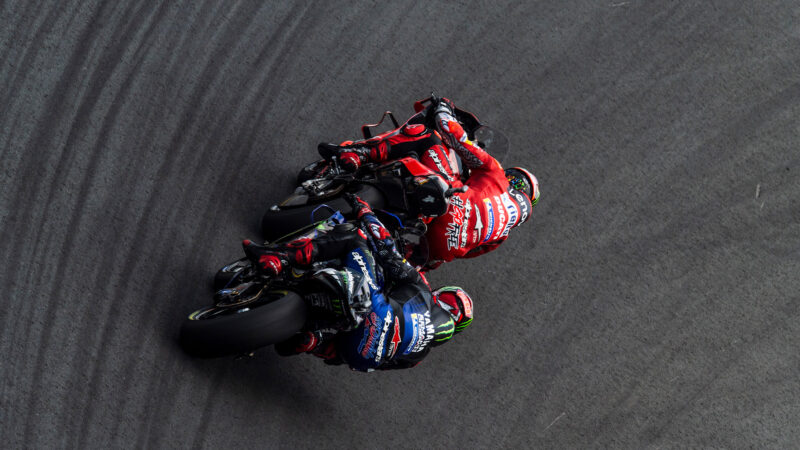
Quartararo and Bagnaia fought for the MotoGP title in 2021
Studio Milagro/DPPI
2021 was the year of a new MotoGP generation, as Valentino Rossi retired; Pecco Bagnaia and Joan Mir finished behind the 22-year-old champion Fabio Quartararo; and Ducati ended the season dominant as it prepared to supply a third of the grid in 2022.
Marc Márquez signalled his intention to be back in the championship fight next year, with three victories as he continued his recovery from a broken arm. There was an amazing recovery too, for Ana Carrasco, the WorldSSP300 rider who returned to the top step of the podium nine months after breaking her back.
But with the heroics, came the desperately sad moments. A decade on from Marco Simoncelli’s death, the sport faced tough questions about the risks of pack racing — as well as the safety of young riders — after three teenage riders lost their lives.
As ever, Mat Oxley brought Motor Sport readers the news and insight from inside the paddock, along with his unique analysis. He’s selected five of his best columns below.
‘We build our MotoGP engine so the electronics have to do as little work as possible’
Kurt Trieb designed the engine of KTM’s RC16, which has won as many races as Ducati’s Desmosedici over the past season and a half. Trieb tells us about his design philosophies and reveals that the RC16 isn’t a 90-degree V4
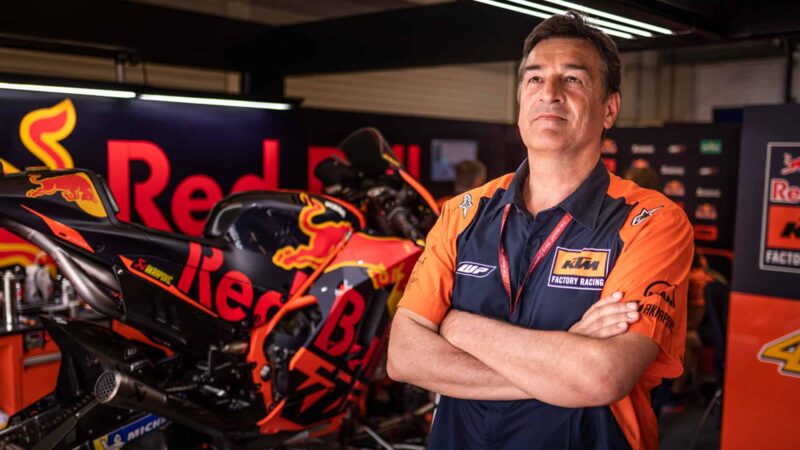
Kurt Trieb and KTM’s RC16, winner of five of the last 23 MotoGP races
KTM
August 24
KTM entered MotoGP four years ago and is already battling with rival manufacturers who have been racing in the premier class for decades. Only Yamaha has won more races since the start of 2020, with KTM’s five victories equalling Ducati’s win rate and bettering that of Aprilia, Honda and Suzuki.
At the heart of KTM’s RC16 is its engine, the same 1000cc 90-degree V4 configuration used in Ducati’s Desmosedici, Honda’s RC213V and Aprilia’s RS-GP. At least, that’s what we always thought. Except that our recent chat with KTM’s Head of Engine Development Road Racing Kurt Trieb revealed that the RC16 isn’t a 90-degree V4, after all.
There’s no doubt that Trieb – who also designed KTM’s Moto3 250cc single and its original 2005 MotoGP V4 (used briefly by Team Roberts) – has played a huge part in the RC16’s success, from his original concept to detail work on firing configurations, combustion and so on.
Valentino Rossi: ‘I switched on the emotions of normal people’
Nine-time world champion Valentino Rossi today announced his retirement, after an unforgettable 26 years of GP racing. MotoGP may never be the same again
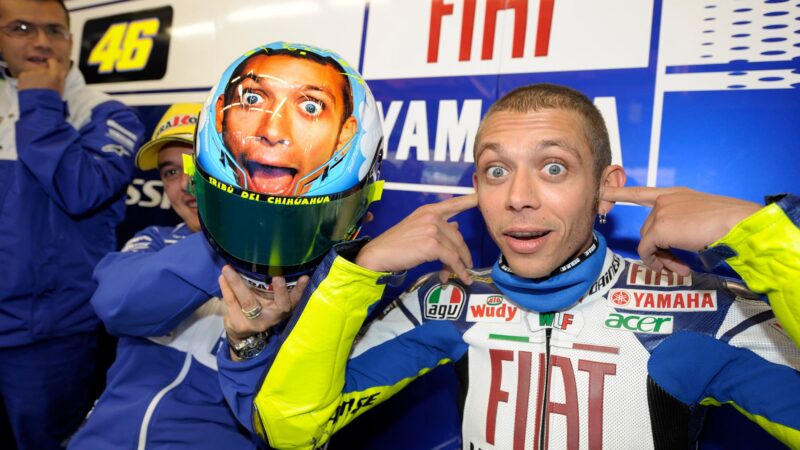
Rossi at Mugello in 2008, on his way to his eighth world title
Yamaha
August 5
At the end of the day the sun goes down. Valentino Rossi has been riding through the twilight of his career for the last few seasons, so it’s no surprise that today he announced that his sun will finally dip below the horizon at Valencia in November.
And so will end the career of arguably the greatest motorcycle racer of all time, arguably the greatest motor sportsperson of all time and undoubtedly one of the greatest sportspeople of all time.
Rossi’s sun has shone for quarter of a century over the sport of motorcycle grand prix racing, which hasn’t even been going three-quarters of a century.
He has lasted longer than any other motorcycle GP rider and longer than any Formula 1 driver, despite the fact that he goes to work protected by a cowhide suit and impact-absorbent padding, instead of a carbon-fibre safety shell with inbuilt oxygen supply.
Carrasco’s remarkable comeback and the sad tale of grand prix racing’s female pioneer
On Sunday Ana Carrasco won a race just nine months after breaking her back. Hers is an amazing story but no more so than the shocking story of the first woman who tried to make it in motorcycle racing
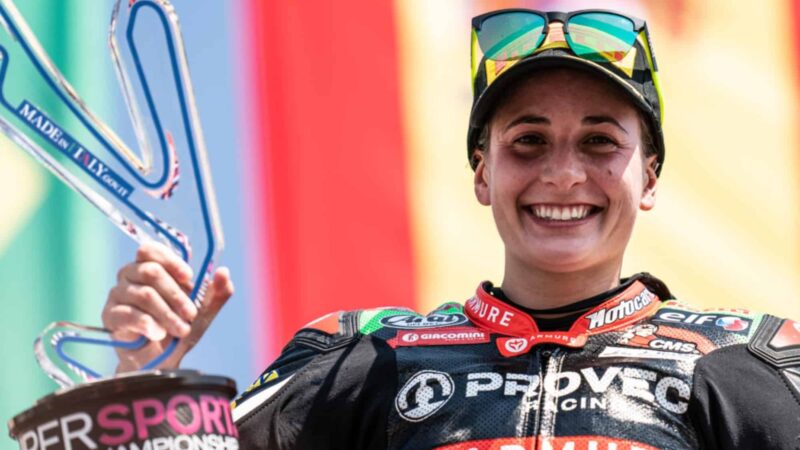
Carrasco on Sunday: winning a world championship race nine months after breaking your back is some going
Kawasaki
June 15
Marc Márquez’s comeback from potentially career-ending injury is a work in progress, but today we can add the name Ana Carrasco to the list of superhumans – most notably Mick Doohan, Robert Dunlop and Ian Hutchinson – that overcame the most hideous odds to keep doing what they love and win again at a high level.
In 2018 Carrasco won the Supersport 300 World Championship and last September suffered serious injuries while testing her Kawasaki Ninja 400 at Estoril. She fractured two vertebrae, luckily without damage to her spine, her luck measured in mere millimetres.
For obvious reasons, spinal injuries are a particular worry for motorcycle racers, but Carrasco didn’t hesitate for a moment. Her immediate focus, just like Doohan and the others, was: when can I get back on a motorcycle?
The titanium support bars and fixing screws inserted to stabilise the fractures were removed in January and the holes left by the screws filled with freeze-dried bone graft to accelerate healing. At the end of February Carrasco started pre-season testing and at round one at Aragon she finished fifth in the second race, three tenths behind winner Tom Booth-Amos.
Marco Simoncelli. Big hair. Big heart. Big balls
Marco Simoncelli was the lion that roared. He was the wild-haired, wild-riding Italian who came charging into MotoGP, determined to fight his way to the top by any means necessary. This is the tribute Mat Oxley wrote a few days after his death at Sepang, Malaysia, on October 23, 2011
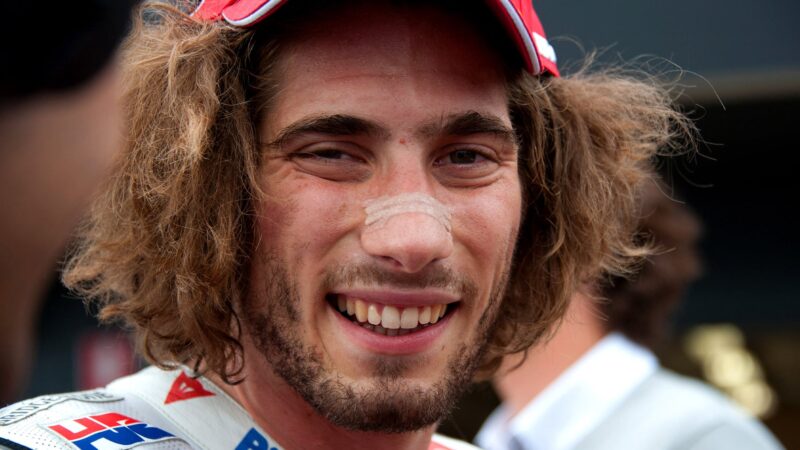
Simoncelli enjoys his second-place finish – his best in MotoGP – at Phillip Island, the Sunday before his death
Mirco Lazzeri gp/Getty Images
October 19
MotoGP hadn’t seen anyone like Marco Simoncelli for quite a while. He was a rough diamond washed up on a beach of smooth pebbles.
The tall, ambling Italian was very different to many of the riders with whom he shared the grid. He wasn’t a cold-blooded analyst who played the percentages. He was a red-blooded heavyweight fighter who came bouncing into the ring, wearing a maniacal grin, ready to punch everyone’s lights out.
He was what gonzo author Hunter S Thompson called “a hell-for-leather pilot”, a “kick the tyre, light the fire and away we go” hero. Even his father, Paolo, called him a warrior.
There was no holding back in Simoncelli’s world, no thinking (or at least only very occasionally) that fourth place would do when he could spy a podium finish a few seconds ahead. He loved a fight, usually went looking for trouble and believed that was the correct way to go racing. He raced by chasing whoever was in front of him, not by checking his pit-board to make sure he was running the correct pace as calculated by his engineers.
MotoGP: it’s time to end the juvenilisation of motorcycle racing
Last week’s decision to raise the minimum age limits across motorcycle racing was a start, but it should only be the beginning of a change of philosophy
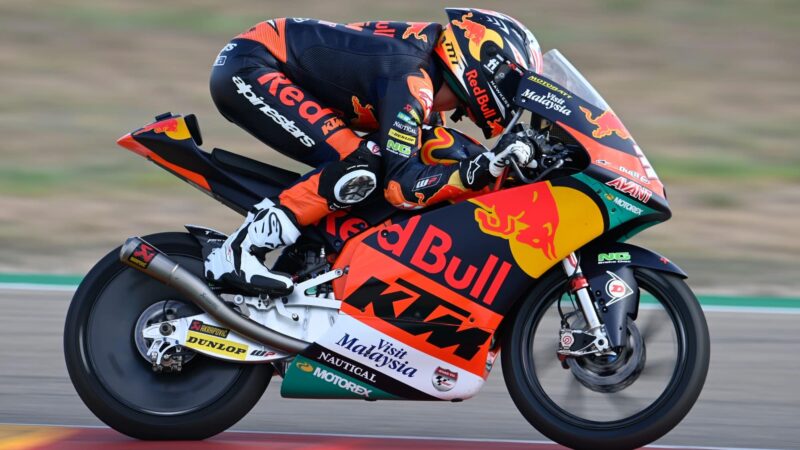
Pedro Acosta won his first GP aged 16, but what good does that him and what good does it do for the sport?
Red Bull
October 26
Following last Friday’s announcement by Dorna and the FIM, children will no longer be allowed to compete in world championship motorcycle racing from 2023. This is a good thing and Dorna and the FIM need to be congratulated for making the decision following last summer’s spate of teen deaths – Jason Dupasquier, Hugo Millán and Dean Berta Viñales – in junior MotoGP and World Superbike classes.
And yet Dorna and the FIM still say it’s okay for children to race grand prix bikes in the so-called Road to MotoGP championships, which makes me wonder if they fully grasp the fact that motorcycle racing is a particularly dangerous sport – it isn’t football, it isn’t gymnastics, it isn’t even boxing or karting.
Therefore last week’s decision should be the first step on the road to end the juvenilisation of motorcycle racing. Over the past 30 years – since the advent of minimoto racing in the early 1990s – there’s been a tendency to reduce minimum age limits, creating a ridiculous race to the bottom.

